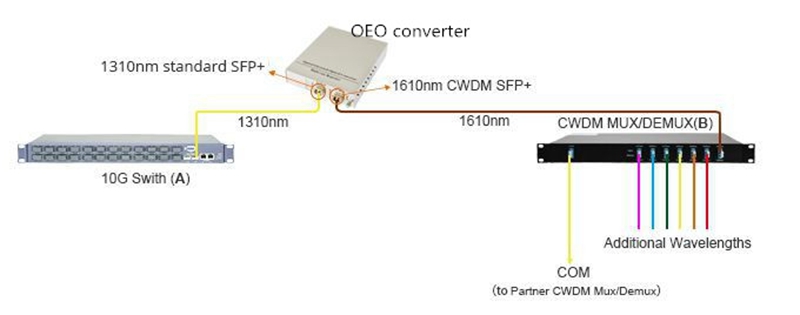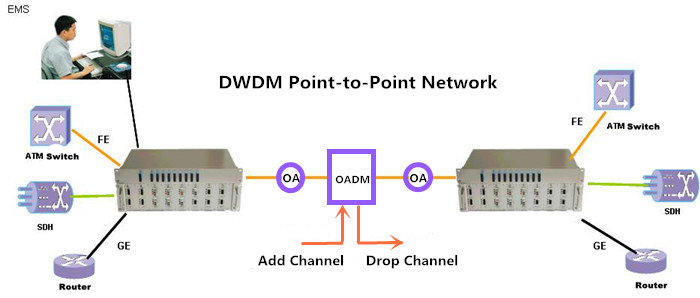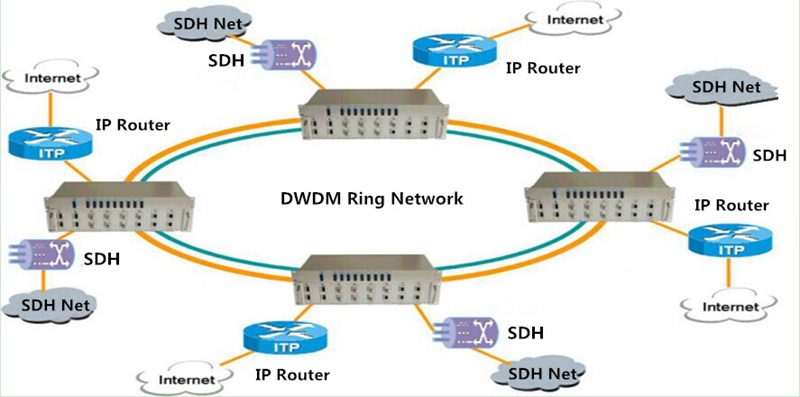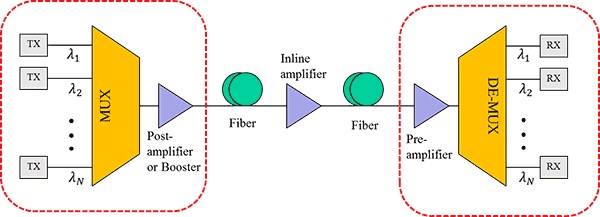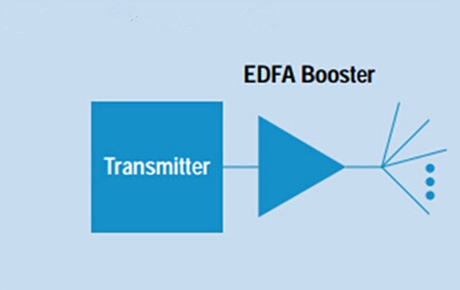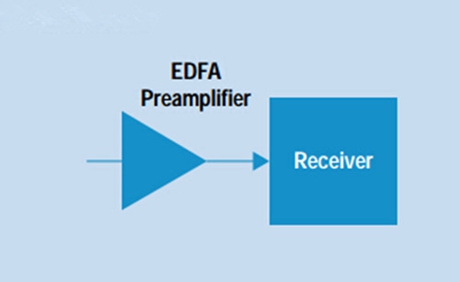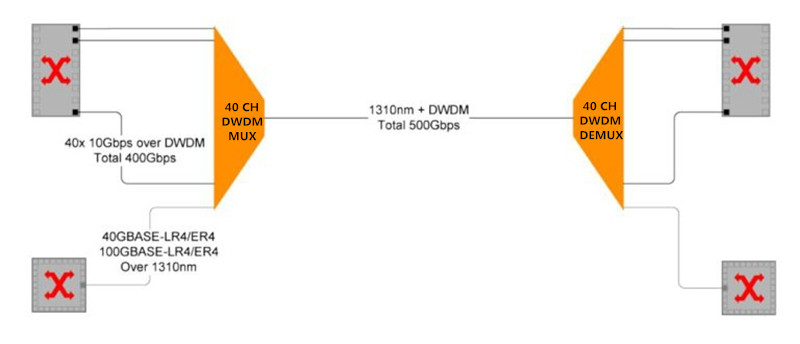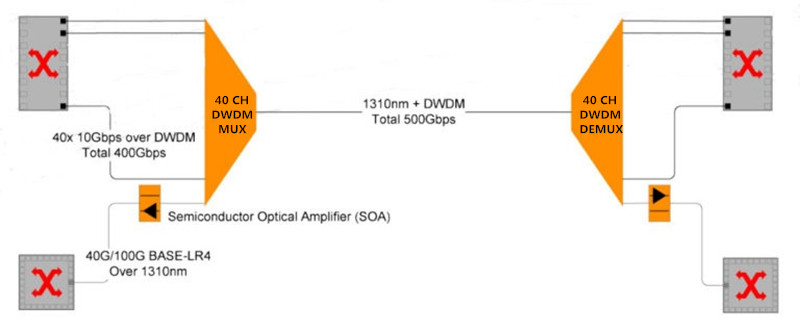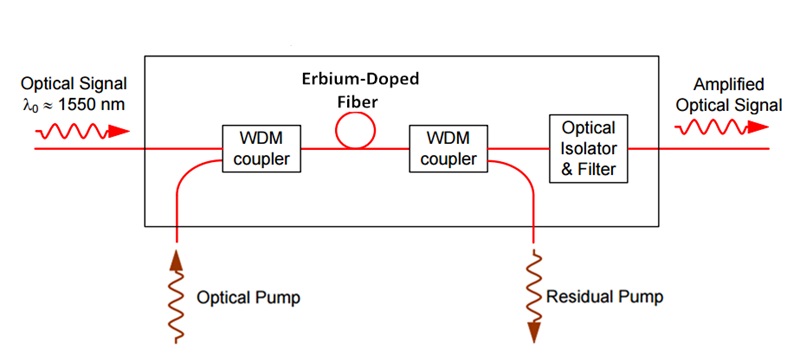Introduction to Optical Transponder
Optical transponder is also referred to as WDM transponder, wavelength-converting transponder or OEO (Optical-Electrical-Optical) 3R (re-timing, re-shaping, and re-amplifying) converter, and the word “transponder” is named according to the combination between transmitter and responder. It is an important unit in WDM system which main function is to convert the wavelength and the pattern of the optical signals and amplify the optical signals for long-haul transmission. At present, the optical transponder unit is commonly used in 10G connections including SFP+ to XFP, SFP+ to SFP+ and XFP to XFP fiber connections, and 40G QSFP+ to QSFP+ connections.
Working Principle of Optical Transponder
The optical transponder is designed to automatically receive a signal, amplify it and then retransmit the signal with another wavelength, without changing the content of the signal, which enables the different system to be connected. For instance, a 10G DWDM system can be deployed on the basis of a normal 10G system if using the optical transponder to convert a 850nm signal into a 1550nm one. What’s the working principle of the optical transponder? In general, when an optical input signal passes through the optical transponder, it will be firstly converted into an electrical one. Then a logical copy of the input signal is generated that features a new amplitude and shape and is used for driving the transmitter. Finally, an optical output signal with a new wavelength would be generated, as shown in the following figure.
Wavelength Conversion Case Analysis
As mentioned above, the optical transponder unit plays an important role in WDM system, which is very welcomed when deploying a CWDM or DWDM system on the basis of a normal system. It is well known that 850nm, 1310nm or 1550nm are used in a normal system for optical signal transmission, while CWDM or DWDM wavelengths are applied in a CWDM or DWDM system. Hence, if we want to transmit the normal signals to a CWDM or DWDM system, the optical transponder should be required that enables the normal wavelengths to be converted into CWDM or DWDM ones without changing the signal data. Here shows a wavelength conversion case by using the optical transponder.
We can learn from the case that a 10G-LR 1310nm SFP+ module is connected to a 10G switch on site A, while a 10G CWDM SFP+ module working on 1610nm is used with the CWDM Mux Demux on site B. As the 10G 1310nm signal from site A is required to be transmitted to the existing CWDM system on site B, a two SFP+ ports optical transponder should be used for converting the 10G 1310nm signal into a 10G 1610nm CWDM signal. To achieve this, another 10G-LR 1310nm SFP+ module and 10G CWDM 1610nm SFP+ module should be inserted into the 10G SFP+ to SFP+ optical transponder, separately. Furthermore, fiber patch cables are required to link the two 10G-LR 1310nm SFP+ modules and two 10G CWDM 1610nm SFP+ modules together, so that a complete link for wavelength conversion can be done.
Conclusion
The optical transponder is an important component in WDM system that makes the wavelength conversion easy, so that the signal data can be transmitted from a normal system to a WDM system. For instance, with the use of the optical transponder unit, a 1310 signal from a 10G fiber optical network can be converted into a 1610 CWDM signal and transmitted to the 10G CWDM network. If you are facing the problem about wavelength conversion for connection between a normal network with a WDM network as noted above, the optical transponder is quite recommendable for you.











